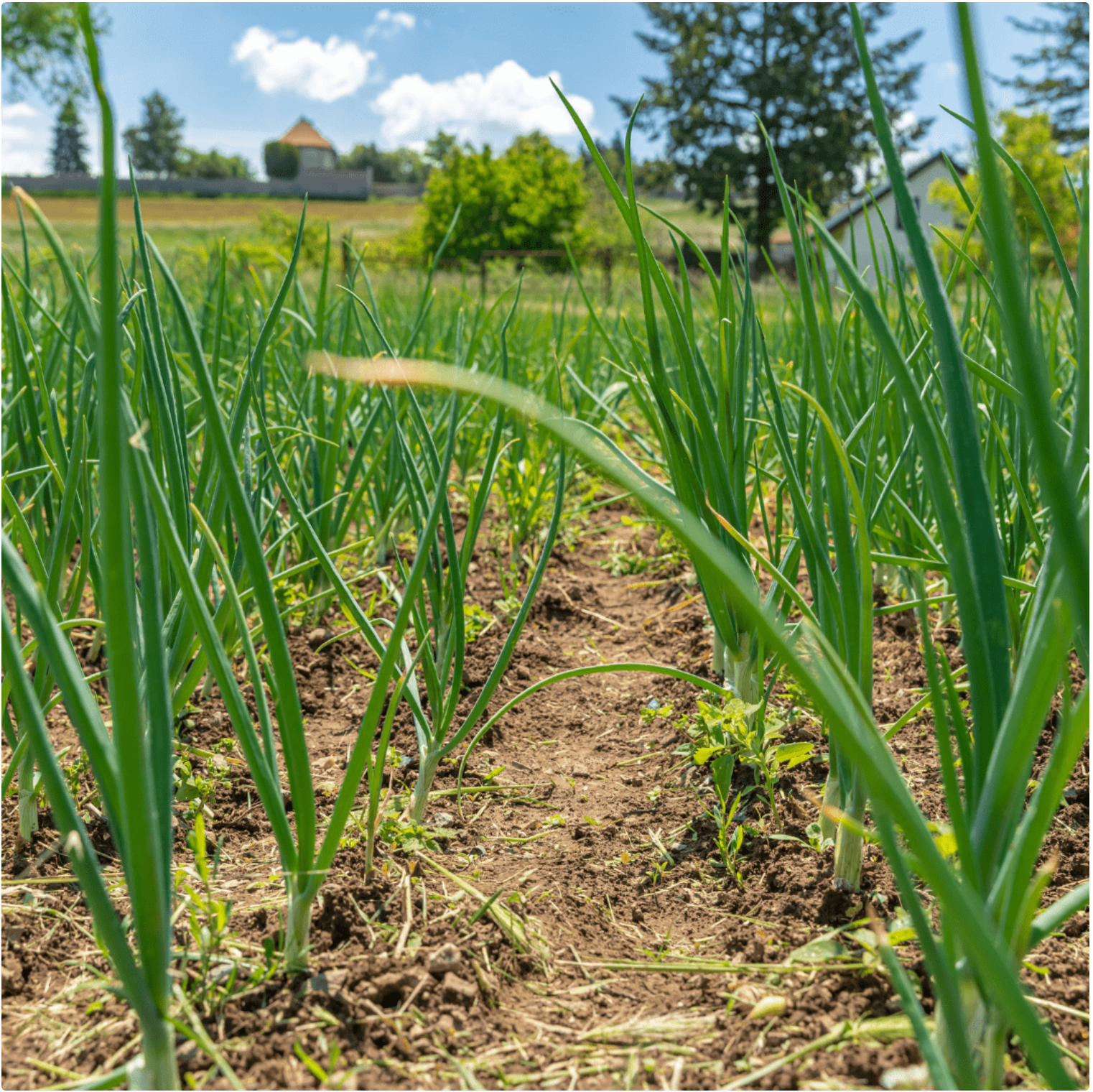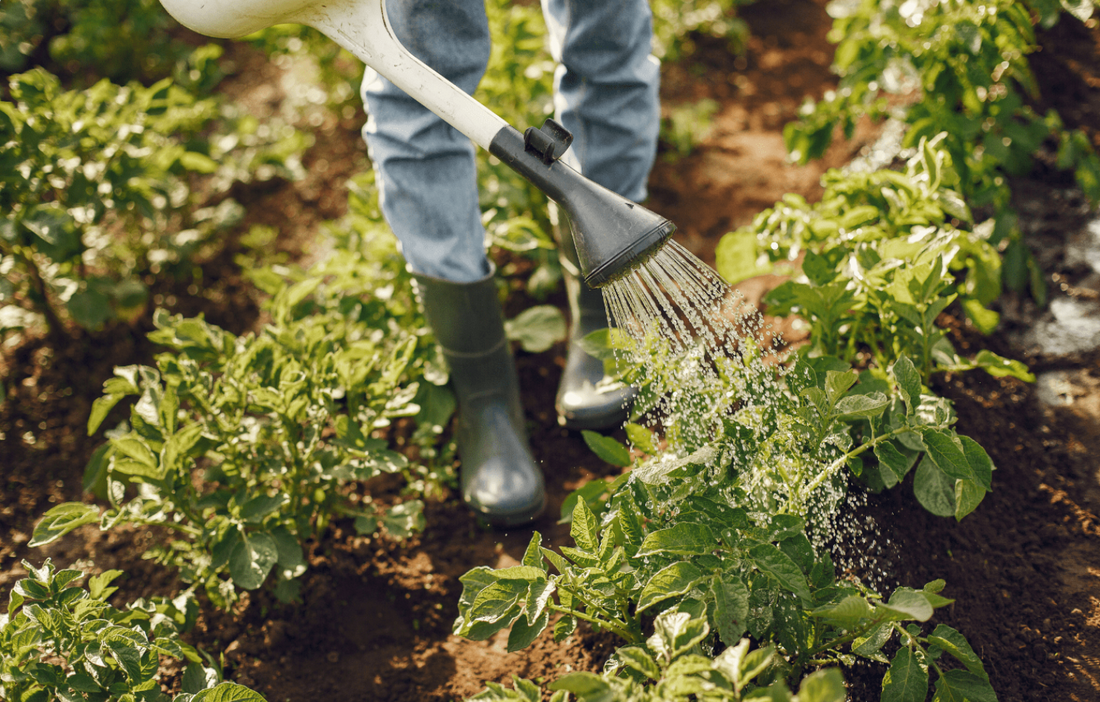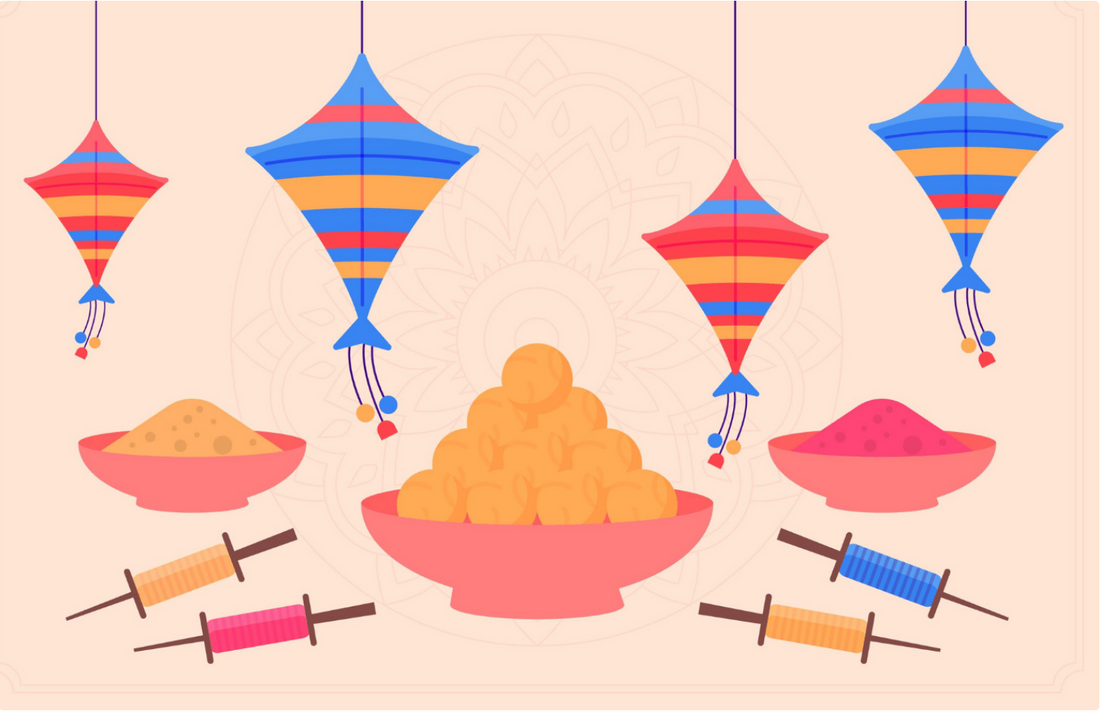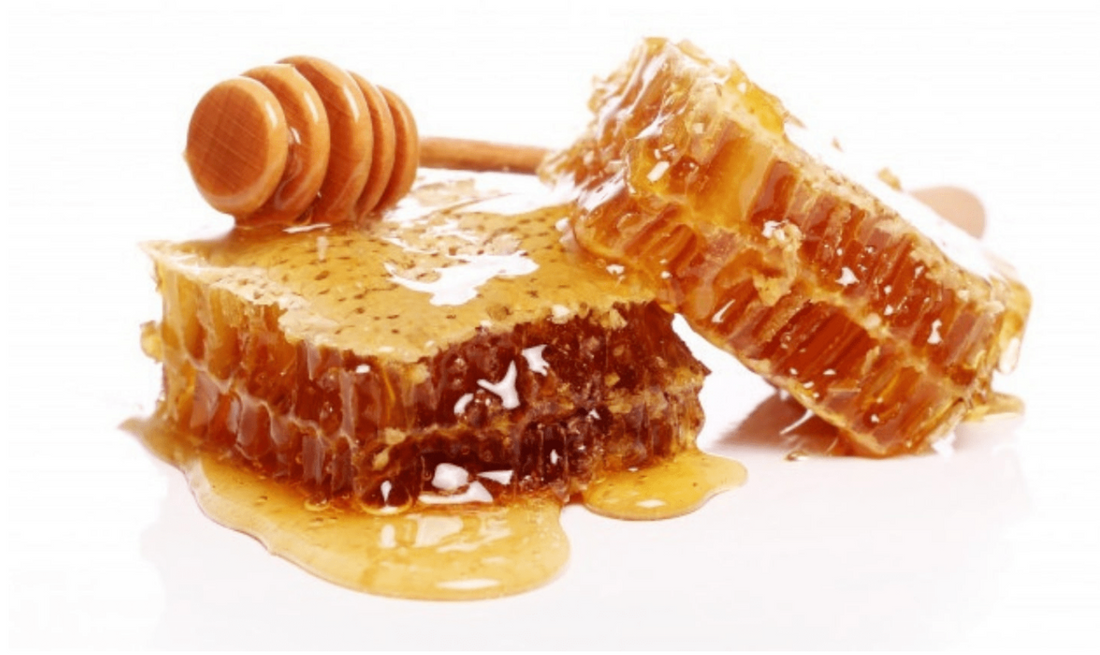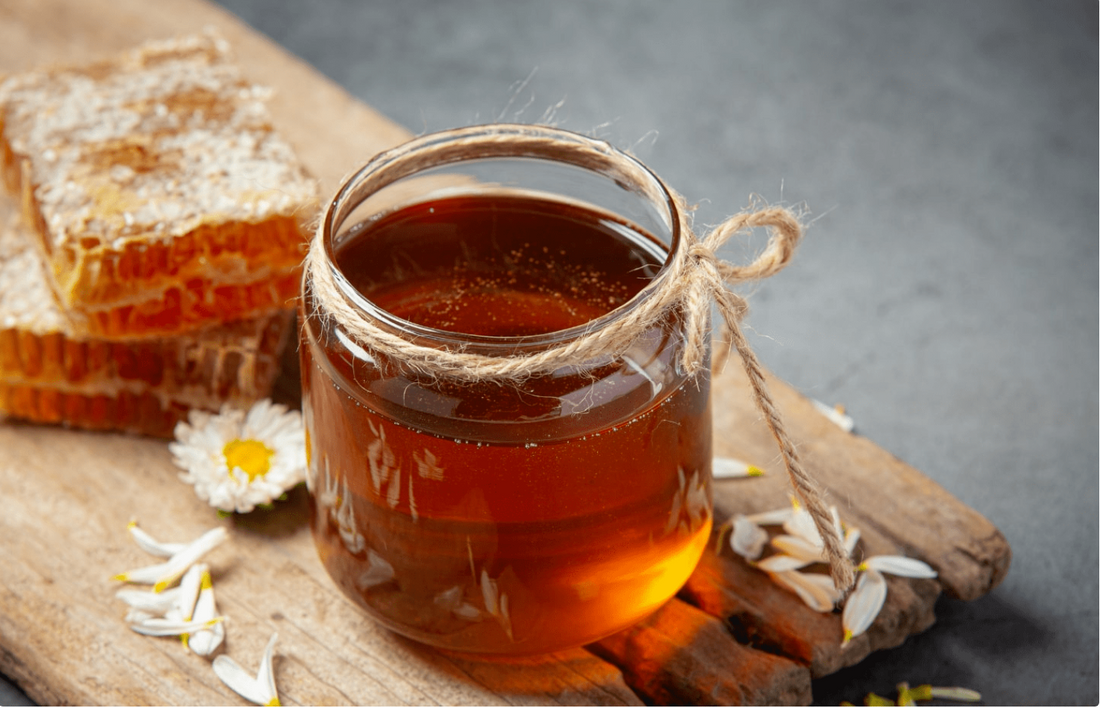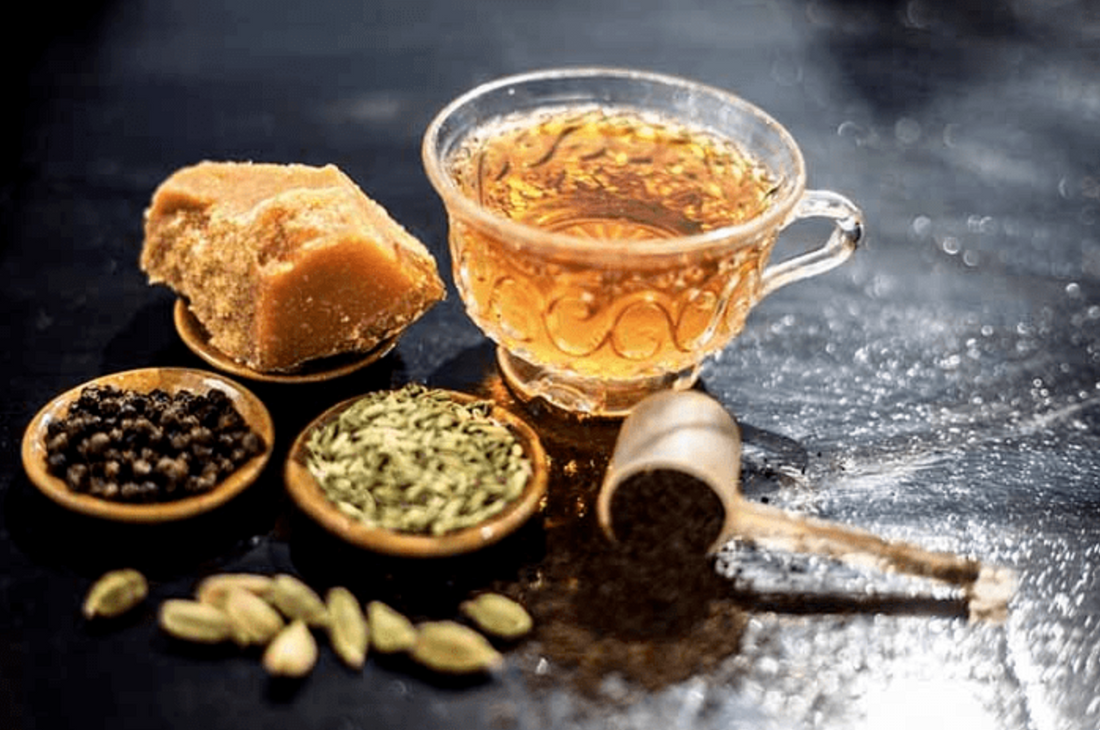Articles
What Are The Benefits Of Eating Locally Grown Foods?
You can count its warts or cast a halo on it, but it’s an undeniable fact that food and nutrition are uncompromised aspects of health. Eating locally grown, seasonal food can make a visible difference to one’s health and has multi-faceted benefits. Choice of eating local food is not merely a choice of food but a choice of lifestyle and we all took that new year resolution of taking care of our health, didn’t we? When food is sourced from far and distant places, not only the element of uncertainty as to who grew it and how it was grown is there, but it also makes the exposure to preservatives and pesticides inevitable. According to a study, over 60% of conventional produce has residual pesticides even after thorough washing, leading to contamination. As consumers, when we buy local food, both information and good food become accessible. The information as to who grew it? if it was grown pesticide-free or not? the freshness of the harvests? Answers to these questions can become key parameters for the prior- consumption decision. Here are some of the benefits of locally grown foods: 1. Healthy : The most obvious benefit of all is the health of the family. Locally grown food tends to be fresh and seasonal in nature. This ensures that nutrition is delivered just right when cooked. When food comes from faraway places, a lot of nutrition is lost because of time in transit and because of the preservatives used. 2. Environment friendly : Sourcing food from farms directly, creates a very safe food supply chain, making it less taxing on the environment. It takes a toll on the environment to transport tonnes of food on an everyday basis. Greenhouse emissions and your carbon footprint can be significantly reduced if the food doesn’t have to travel far to get to your plate. 3. Economical : Due to decreased middlemen, storage costs and shipping, locally grown food is lesser in cost for both retailers and end consumers. This also supports the local community of farmers. 4. Seasonal : Locally grown food also means that you are getting to consume only what’s seasonal. This is a very healthy choice as stored food and food from distant lands pose risk for health. Seasonal food is also very good for health as produced during different times of the year it tastes better and has the highest amount of nutrients and antioxidants. 5.Knowing the farms and farmers : With the increasing carbon footprint and health hazards, people are conscious about where their food comes from and also teaching the same to their kids. By interacting with farmers, you can understand the crop conditions, growing and harvest processes and be part of a conscious consumer community. Locally grown food is always filled with flavor, nutrition and good health. It is not only important to be making conscious healthy choices but also to impart this wisdom to the generations coming ahead. This can help us create a future where farmers get fair prices and do not make losses because of wastages or unfair pricing. This is a small step, but an extremely important one towards the larger goal of creating a sustainable future and these small steps can make a huge difference.
Learn moreWe Are Same Same, But Different! How Makar Sankrant/Uttarayan/Pongal Is Celebrated With Similar Yet Different Recipes Across India?
Makar Sankranti or Uttarayan is celebrated across the country in different ways and the cultural significance of the festival varies geographically across states. The festival marks transition of sun into the Capricorn zodiac sign, the sun begins its northward journey marking the end of the Winter solstice. This is usually the 14th or 15th of January. (Makar means Capricorn and Sankranti is transition) The god is worshipped and revered. Makar Sankranti is also celebrated as the harvest festival. Different states celebrate this festival as per their local culture, traditions, and needless to say, the best Indian food. Here is how various states across our country celebrate this grand festival. Maharashtra : Makar Sankranti in Maharashtra is celebrated by exchanging “til-gud” (sesame seeds and jaggery) as a mark of sweet beginnings, to forgive and forget misgivings. Aromatic dry ingredients such as dry roasted sesame seeds and crushed peanuts are sweetened with jaggery and laced with cardamom for an aromatic and healthy laddoo. One of the top contenders for the best Indian dish, is it not? Andhra Pradesh and Tamil Nadu : The festival is celebrated as “Pongal” for 4 days, beginning the festivities with a “bhogi” where old and used items are discarded. Since it is primarily a harvest festival, the cows and the sun god are worshipped during these days. Families come together to nurture new beginnings, colorful rangoli adorn entrances, kites flown, sweet and savory “Pongal” is prepared. Sweet Pongal is prepared with fresh rice, jaggery, cashews, ghee, and a dash of milk. Savory Pongal is made with rice, ginger, and whole spices. An absolute delight of wholesome healthy Indian food! Karnataka : Sankranti is celebrated in Karnataka with a ritual called “Ellu Birodhu” where women exchange “Ellu Bella” (regional delicacies made using freshly cut sugarcane, sesame seeds, jaggery, and coconut) with other families. Farmers decorate their bulls and cows in colorful costumes and celebrate the arrival of spring. Punjab : The festival of Lohri is celebrated as the harvest season of Rabi crops in the state and the end of winter. A huge bonfire that symbolizes the Sun bringing in warmth is made, with people singing folk songs and dancing around it. It is traditional to eat Makki di Roti with Sarso da Saag, sweets made from jaggery and sesame seeds. Makki di roti is a flatbread made out of maize flour and Sarso is mustard greens. This is one of the best Indian dishes ever for winter, with its nutrient content and immunity-boosting qualities. Bihar and Jharkhand : People from these two states bathe in rivers and ponds on the first day and feast upon seasonal dishes (made with til and gud) as a celebration of a good harvest. The second day is celebrated as “Makraat”, where a special khichdi with rice, lentils, and winter vegetables such as cauliflower, peas, and potatoes are prepared and is served with chokha (roasted vegetables), papad, ghee, and achaar (pickle). West Bengal, Assam, and Northeast : In West Bengal, Sankranti, also known as Poush Sankranti is celebrated as a harvest festival. During Poush Parbon, traditional Bengali sweets are made with rice flour, coconut, milk, and ‘khejurer guru (date palm jaggery). Magh Bihu or Bhogali Bihu in Assam marks the end of harvesting season in the month of Maagha (January–February). During Magh Bihu people of Assam make cakes of rice with various names such as Shunga Pitha, Til Pitha, etc., and other sweets of coconut called Laru. The highlight of these healthy Indian recipes made during the harvest festival is that freshly harvested grains and vegetables, seasonal to the state is used. While the essence of the celebration unifies all states, the manner each state celebrates this festival is unique and diverse!
Learn more5 Ways Of Including Forest Honey In Your Diet?
Undoubtedly, Forest honey is lot more exquisite and packed with multiple health benefits, as the bees collect nectar from wild oak trees, oak holm, and cork oak trees. We have discussed at length the benefits of natural forest honey in our previous blog. Have you grabbed a jar of the best forest honey yet? Do not give it another thought, for it can sit in a cool corner of your pantry for months to come.While enough has been said about the goodness of consuming forest honey, how can it be included consciously as a part of one’s daily diet remains an inadequately answered question. This golden delicious, goodness-filled liquid can replace sugar, for the most part. Cooking with honey can enhance the taste and texture of many dishes removing the misconception of using honey in tea varieties alone! Use it as a dip, bake with it, add it as a dressing, or virtually anything else, provided you just learn how much needs to be added into what you plan to whip up! Five super-easy tricks and hacks to include forest honey in your daily diet- 1. Well-the obvious. Add it to your beverages, wait a minute, soups too! Forest honey is an excellent alternative to sugar and hence it can go into your hot cuppas and your breakfast juices. A small tip- try and do not load up your drink with a lot of honey. Say if you normally use a spoonful of sugar stick to the same quantity with honey. This will help bring out the natural flavor of whatever you are having. A dash of honey in soups made with carrot, squash or sweet pumpkin, potato; those with a slightly sweet taste can taste heavenly with a bit of honey in it! 2. Use it in your bakes Are you someone who bakes your regular bread and cakes? Well, bring on the world of forest honey into your oven! Honey adds a distinct but mild flavor to quick-baking, non-yeast bread, shortcakes, cookies, etc, which can be delightfully easy to prepare and absolutely a hit with the kids too. 3. Use it as a spread- Try and make honey butter at home- Just whisk together four parts of room-temperature butter with one part of honey. Mix and match with smaller batches if you want to be a little careful. Use this as a dip for cookies, biscuits, or sweet crisps. It can also be drizzled on fruits such as banana, apple, avocadoes, or in a bowl full of dry fruits. Honey can also be used on toast, pancakes, and bread of all varieties and consumed. 4. Super simple munchies- Since honey retains its stickiness and texture even after applying heat, it can be used to make granola, trail mix bars, or cereal bars! Just toss together oats/ whole grains, dry fruits and seeds, or whatever healthy bits you have in the kitchen, coarsely grind them all, and add honey to it. Now balance the taste of all ingredients added to the sweetness of honey for the perfect snack. 5. Honey as your daily medicine- The hot toddy is legendary! An ultra-hot steaming mug of green tea, cinnamon, nutmeg, cloves, and a spoon or two of pure forest honey can drive away your fatigue, handle the beginnings of flu! Honey with hot water and a dash of lemon can help enhance your metabolism, honey in milk can soothe you to into a deep night’s slumber. You can just explore possibilities with this liquid magic!Some “sticky tips” you may want to remember- Grease the spoon/container you use to measure to while scooping out honey from the jar. This way it gets off easily. Quickly cut and shape the homemade honey snack bars so that they remain soft and chewy. Always mix honey in warm liquids so that it dissolves easily. The best forest honey can easily become the “star” ingredient of your pantry, something you cannot ever do without. All it takes is a little bit of experimenting, after all, there is “sweet” nothing to lose, is it not?
Learn moreWhat Is The Difference Between Regular Honey & Forest Honey? Why Should You Choose The Latter?
Did you know, honey is a superfood packed with all substances vital for sustaining life? The wonderful sweetener includes enzymes, vitamins, minerals, and water; and is also the only food containing “pinocembrin”, an antioxidant associated with improved brain functioning. Isn’t that amazing?. What is regular honey? Of course, all honey starts as raw honey, but the product that ends up on shelf depends on what it goes through after the harvest. Production of regular honey involves several steps before it is bottled; such as pasteurization and filtration to enhance its shelf life and texture. Pasteurization destroys the yeast found in honey and also takes away natural antioxidants present in it. Ultra-filtration refines it further to make it transparent and smooth, removing other beneficial nutrients like pollen, enzymes, and antioxidants. Due to the large-scale commercialization process, regular honey often has additives, sugars, and artificial sweeteners such as high-fructose corn syrup or brown rice syrup. The chances of regular honey being pesticide-free and organic are also rather less. Is forest honey a healthier option over regular honey? Organic wild forest honey is the honeydew gathered by bees from wild forest trees such as holm oak and cork oak trees. Bees also collect it from rare herbs and wild flora found here. Wild forest honey has a sweeter fragrance when compared to the usual honey. Wild forest honey is full of vital vitamins such as C and B6 and minerals like magnesium, phosphorus, sodium, calcium, potassium, zinc, and iron. It is also high in nutritive elements such as sucrose and fructose. Organic forest honey is the perfect alternative to regular honey as instead of added preservatives that are present in processed honey, raw forest honey is full of naturally occurring enzymes, antioxidants, and minerals. Loaded with therapeutic benefits, the potent wild forest honey has several medicinal benefits ranging from treating respiratory ailments to heart diseases. Further benefits of forest honey are- Pure Forest honey lowers the bad cholesterol (LDL) in the body and raises the levels of good cholesterol (HDL). Hence, wild forest honey can lower the risk of heart diseases. It has phytonutrients with antioxidant, antibacterial, and antifungal properties that act as protective agents of the body, thus helping in enhancing the immune system. Forest honey has proven benefits for lowering and even curing the symptoms of respiratory diseases and can reduce inflammation in the airways of the lungs. This honey has natural hydrogen peroxide present in it, a known antiseptic. This combined with its antifungal and antibacterial properties serves as an effective remedy for fighting infections. Wild Forest honey is an excellent sugar replacement, particularly if you attempt to maintain your weight since wild forest honey’s GI is well below sugar, ranging from 54 to 59, while the GI of other sugar forms is as high as 105. It is a natural remedy for dandruff, and also helps in controlling eczema. The direct application of raw wild forest honey on the face can reduce pimples, black patches, and dead skin cells due to its antibacterial and anti-fungal effects. In a nutshell- Regular processed honey is the by-product of mindless mass manufacturing whereas pure forest honey is the result of the joint effort of wild honey hunters and wild honey bees Forest honey is not pasteurized, is unadulterated, and has no added preservatives. All of its nutrients are intact. While regular honey is diamond-clear and golden in texture; raw forest honey has a thick and cloudy texture. It tastes less sweet and has a slightly salty taste. How do you differentiate between the two? Dissolve samples of both these types of honey in water. Processed honey would get dissolved in the water within a few seconds, and the wild forest honey, being a thick paste, does not get dissolved easily. Choosing to replace sugar with honey in your diet is a wise move. What can be more reassuring is that your choice is adequately justified. Drop a heart if you agree!
Learn moreKeep Your New Year Resolutions Tight This Year With Satisfying And Healthy Meals Without Having To Cheat!
Which one of us doesn’t resolve? The onset of a brand-new year is a phase filled with a list of promises one makes to him/herself intending to upkeep them for a lifetime! An optimistic approach to welcoming the new year, albeit a tough one to follow for years to come especially if they revolve around health. How about resolving to become healthy, in a sharp, smart and a sustainable manner? Resolve and work on your health with these 5 guilt-free, tummy-happy tips and hacks to healthy meals Explore the world of whole-grains and millets : Whole grains are naturally high in fibre which gives a full and satiated feeling for a longer time, making it easier to maintain a healthy body weight. Consumption of whole grains are also linked to a lower risk of heart disease, diabetes, certain cancers, etc. Whole grain wheat especially is packed with a lot of nutrients and hence, a must to be included in one’s daily diet. Millets are a versatile grain packed with health benefits and can easily be used to replace starch as it can be dished out as breads, cereal, your regular daily meals and beer too! Refrain from the whites especially refined sugar : Did you know that forest honey is a great alternative to white sugar? Organic wild forest honey is mineral-rich, enhances your immunity, helps treat respiratory infections and is good for the skin and hair. A dash of forest honey is all that you need to quench that sweet craving of yours! Do not forget your proteins : Did you know that adults need a minimum of 1 gm/ kilo of their body weight per day? Groundnuts offer a solid 26 gm per 100 grams of protein; which is a super-easy way to meet your daily protein requirement quickly. Ensure that you soak your daily quota of groundnuts overnight to enhance their nutritive value and to cook easily. Ensure you have healthy snacks handy : Poha, puffed rice, roasted nuts & sooji can be mixed and combined to dish out an evening or a mid- morning snack. Combine them with chopped vegetables, add a dash of spices and salt and you are covered. Crave a sweet snack? Have an assortment of nuts and dry fruits. Include natural fat burners such as lemon and ginger too : Ginger, lemon, bananas and berries help burn fat naturally and enhance metabolism in the system. Whip up a mean ginger lemon juice with a bit salt and sugar to clear your system of toxins, once a week. The entire journey of healthy eating habits begins with the first single step of making up your mind! Healthy meals can be oddly satisfying and definitely can be tasty; provided the right ingredients are picked out. Fasting is no fun and it can easily push one to cheat. May this new year open up the world of sensible eating and a wholesome life for all of us!
Learn more7 Tips For Healthy Holiday Eating
“Hippocrates the father of medicine famously quoted, “Let food be thy medicine, thy medicine shall be thy food”. The famous quote emphasizes on importance of healthy food and how nutrients present in what we consume has healing properties. But of course, it is always easier said, or probably read, than done. Healthy eating positively impacts our body, and our mind too. If you find yourself a few pounds heavier, you become lethargic, you lose the will to exercise and the craving to binge-eat seems more uncontrollable than ever. It is but a fact that the holiday season is the hardest time to stick to healthy-eating. You are forced to indulge and eat well, desperately willing your mind to ignore the consequences. How about using the power of your own mind to follow a healthy diet? Plan ahead : work on a holiday food planning guide with the right holiday food planner, you can still enjoy holiday treats and yet not gain additional weight. Work up your mind first, distribute heavy meal consumption times through various days. If you are cooking for guests, pick healthy ingredients from the supermarket and plan your menu ahead. Resist Impulse : BuysIt seems like there is no better time for impulse buying than during the holidays! The smart thing to do? Visit the mall or the supermarket only when in dire need of something. Still want to step out? Finish your meal and step out with a health-conscious pal. Be picky with junk-food! Cutting down junk food during the holidays completely can be a herculean task. Cannot say no to a fried snack or a baked goodie? Don’t. Help yourself to a small portion, take small bites without killing the spirit of this season. Remember to burn these calories out the same day. Drink More Water : Water is the elixir of a healthy bowel system. Since this is a particular dry season in most parts of the world; your body will need more water during the holidays. Target intake of at least 3 liters of water per day! Never Skip Meals : You are likely to end up consuming double the quantity of food to “reward” yourself for skipping a meal. The purpose of letting go of a meal hence gets dissolved. Instead help yourself to a lighter one. Eat a Wide Variety of Food : Imagining gorging on all those regular delicacies ahead of festivities? Don’t! For by the time the festival arrives, your psyche is already all worked up to wolf them down. Prepare your mind to eating a balanced diet in the holidays. Your stomach will be full with a variety of healthy food before you know it! Get Plenty of Sleep : Late night parties can cause sleep deprivation during the holidays. Get your precious forty winks during the day. Copious sleep facilitates faster digestion, settles your stomach and keeps unnecessary food cravings at bay. The holiday season is more about having a positive mind, having fun and spreading cheer while listening to your body the whole time. After all, of what use is a new beginning, if you nurture guilt from your indulgences?
Learn more5 Simple Ways Of Including Jaggery In Your Diet
Simple ways of including jaggery in your diet We live in a time where everyone is trying to find exclusive products for health benefits; when the most beneficial addition to our diet is sitting right in front of us, the good old dadiji’s favorite – Jaggery (Gur). In our last article, (Is it time to switch from Sugar to the Goodness of गुड़ (Jaggery))? , we clarified how and why it is high time to shift from sugar to jaggery now. Here, let’s talk about how you can include this magic food in your daily diet. 1.Water and Jaggery– It cannot get simpler than this. Add a pinch of jaggery powder to your early morning warm water and voila! It will aid the bile movements and will help in controlling the acidity, all the while making the water sweet and tasty. We all know that a glass of warm water in the morning helps in normalizing body temperature and aids metabolism. Try adding a pinch of jaggery powder to it and thank me later 2.Jaggery and turmeric – Both the ingredients are well known individually for their benefits, but it is a lesser-known fact that they work like a charm together as well. Just take a bit of jaggery powder, add a pinch of turmeric to it, roll it in a ball and pop it every morning; it will work wonders for your immunity and for flushing out toxins as well. 3.Jaggery and Peanuts – We have all eaten this combination in some form or the other in different names – chikki, nut butter, etc. Peanuts are high in protein and Jaggery being high in iron and calcium, complement each other like “Vikram and Vetal”. Heat some jaggery powder, add peanuts to it and cool in pancake form for later consumption. 4.Roasted gram with Jaggery –If you are looking for a weight loss snack, gram with jaggery will be your best friend. Roasted gram is high in protein, fiber and vitamins, which helps in keeping the muscles strong and the calorie count low. Mix jaggery powder with some roasted gram, store it in a bottle and save for healthy snacking during busy hours. 5.Ghee with Jaggery – This is the classic desi combination which can flush toxins out of your body in a jiffy. The duo will help keep your skin glowing, nails and hair healthy as well. It also helps in reducing the acidity in the body. Include both in your lunch or dinner with rice/roti. 6.Fenugreek seeds with Jaggery – Methi seeds with Gur are one of the best combinations for your hair. Winters tend to take away the shine and moisture from the hair, but vitamins from Fenugreek combined with iron and potassium from Jaggery can help prevent this problem to a great extent. We hope that we’ve made your life a little simpler. Buy your natural Jaggery here: https://safeharvest.co.in/products/jaggery-powder
Learn moreIs It Time To Switch From Sugar To The Goodness Of गुड़ (Jaggery) ?
Is it time to switch from Sugar to the Goodness of गुड़ (Jaggery) ? The exquisite smell of jaggery from any Indian kitchen announces with it the arrival of good things. Be it a small prasad offering at the mandir, or the celebration of a job promotion – the sweets made with jaggery always work like a charm. From Telangana’s Parvanam to Bihar’s Tilkut – Jaggery, for centuries has been the hero ingredient in sweets across the entire country, leaving its competitor sugar, way behind in the race of taste and health. Sugar, rightfully so, has received the treatment of being the step-ingredient, but is still used as a sweetener in the everyday chai-coffees, not far beyond that. The convenience of sugar makes it much easy and less tedious but jaggery’s taste will definitely make all the effort worth it. How different are sugar and jaggery really? While both sugar and jaggery require sugarcane juice to be boiled, the process starts to take different turns after this. To give sugar the white and clear texture, it is boiled with bone charcoal, which absorbs the unwanted particles. The juice is then crystallized into cubes, the form which we consume. In case of jaggery, the sugarcane juice is left to boil and thicken into a paste which is later poured into moulding containers, which solidifies to gives us the blocks of jaggery that we consume. All it takes is the one step difference to change the sucrose consistency. While sugar consists of simple sucrose which is instantly absorbed in the blood to be released as sudden bursts of energy, jaggery’s complex and longer chains of sucrose ensures that it is digested slower than sugar and the energy is released periodically. Jaggery will help you in many ways, some of which are 1. Detoxifying the liver : Being a natural body cleanser, Jaggery reduces the workload on liver 2. Prevention of Constipation : Jaggery helps in prevention and relieving constipation as it activates the digestive enzymes in the body and stimulates bowel movements 3. Controlled blood pressure : Jaggery is rich in potassium and sodium, which are extremely important for maintaining the acid levels in the body 4. Weight loss : Being the rich source of potassium, jaggery helps in balancing the electrolytes, also in building muscles and boosting metabolism 5. Prevention of anemia : Iron and folate are 2 minerals which are abundantly present in Jaggery, and they ensure normal levels of red blood cells 6. Increased immunity : Jaggery is full of antioxidants, zinc and selenium that help in avoiding free radical damage and in increasing resistance against infections Coming to the million dollar question, how natural jaggery is better than jaggery produced with synthetic additives? When the Sugarcane juice is boiled, Sulphur is added to the solution to clear the solution of impurities and other chemicals like Sodium carbonate, sodium bicarbonate, sodium hydrosulphite and phosphoric acid are also added to enhance colour. While in the natural jaggery, lady finger plants are used to clear the impurities from the solution to ensure no chemical enters your body while consuming Jaggery. To ensure that you get all the benefits of this amazing food, order natural jaggery from Safe Harvest.
Learn moreTo Bee Or Not To Bee
20th May was declared by the United Nations as World Bee Day to raise awareness of the importance of pollinators, the threats they face and their contribution to sustainable development. Pesticides have long been a matter of concern for the existence of bees, the major pollinator of food crops. Issues like Colony Collapse Disorder have reduced bee population by 40% and the major cause for this is pesticide poisoning through exposure to pesticides used on crops or for in-hive mite control. Bees pollinate 70 of the around 100 crop species that feed 90% of the world. The importance of bees stand mainly from the fact that bees are the major pollinators of agriculture. With increase in the volumes of food crops produced, the need for pollination has also increased manifold. Bees are known to support about $170 Billion agricultural crops worldwide. Over the past 16 years however, bee population has been significantly declining, falling about 40.7% last winter. A lot of factors are primarily responsible for decline in bee populations worldwide including parasites, diseases, habitat loss, fragmentation and habitat alteration. But, pesticide exposure has evolved as a major cause in reducing bee population. Spraying pesticides is affiliated with direct exposure to residues. Although the primary focus has been on neonicotinoid systemic insecticides, other pesticides, including fungicides, can result in direct and/or indirect effects on bees. Bees acquire insecticide residues when foraging on contaminated flowers, which may result in bee death. Consequently, contamination of both pollen and/or nectar is the main source of poisoning affecting honeybee populations Where would we be without bees? With no bees around to pollinate our crops, food system would be dramatically altered. Many fruits and vegetables are insect-pollinated and could not be grown at such a large scale, or so cheaply, without bees. Although hand-pollination is a possibility for most fruit and vegetable crops, it is incredibly labor-intensive and expensive. High bee losses year after year could lead to fewer beekeepers, and rental prices per bee colony could increase dramatically. This will ultimately lead to steeper food prices. Eventually, crops that would not be cost-effective to hand- or robot-pollinate would likely be lost or persist only with the dedication of human hobbyists. What can we do to stop bee extinction? Although a lot can be done to encourage the growth of bee population, the most effective would be to address the most responsible cause – use of fewer pesticides. As consumers, we are primarily responsible for maintaining the face of our ecosystem. Consuming food that has been grown by using pesticides is not only unhealthy for us, humans, it is also responsible for deteriorating the health of the bees that help pollinate the farms. We can make it a habit to buy food that are produced organically or without the use of synthetic pesticides. We at Safe Harvest are dedicated to change the way food is grown. By using just bio-pesticides made out of naturally available elements like garlic, chili, Neem leaves etc., our farmers are contributing towards preserving the sanctity of the ecosystem. Let’s spread the message The human-bee conflict is a regular occurrence in Indian cities. Most people perceive bees as something that only makes honey. The importance of bees in the production of food other than honey is widely overlooked. Fear of being stung is majorly what triggers aversion towards safeguarding of the bees. It needs to be made aware to the general public that if natural vegetation goes below a certain percentage, the crop productivity also goes down because of absence of pollinators. Bee-keeping has a huge impact. “With just two boxes, pollination improves not just on the farmer’s land but even on the farms of his neighbors”, says Krishnamoorty from the UTMT society, which works in the three states of Gujarat, Maharashtra and Madhya Pradesh, provides training and support to small farmers to turn beekeepers. As an extremely dependent species, if we have a fresh glass of juice, vegetables and spices, we have the bees to thank! Sources: http://www.crnindia.com/commodity/jeera.html http://www.commoditiescontrol.com/eagritrader/staticpages/index.php?id=68 https://farmer.gov.in/imagedefault/ipm/cumin.pdf https://www.livemint.com/mint-lounge/features/unseen-2019-silence-of-the-bees-11577463902137.html
Learn more